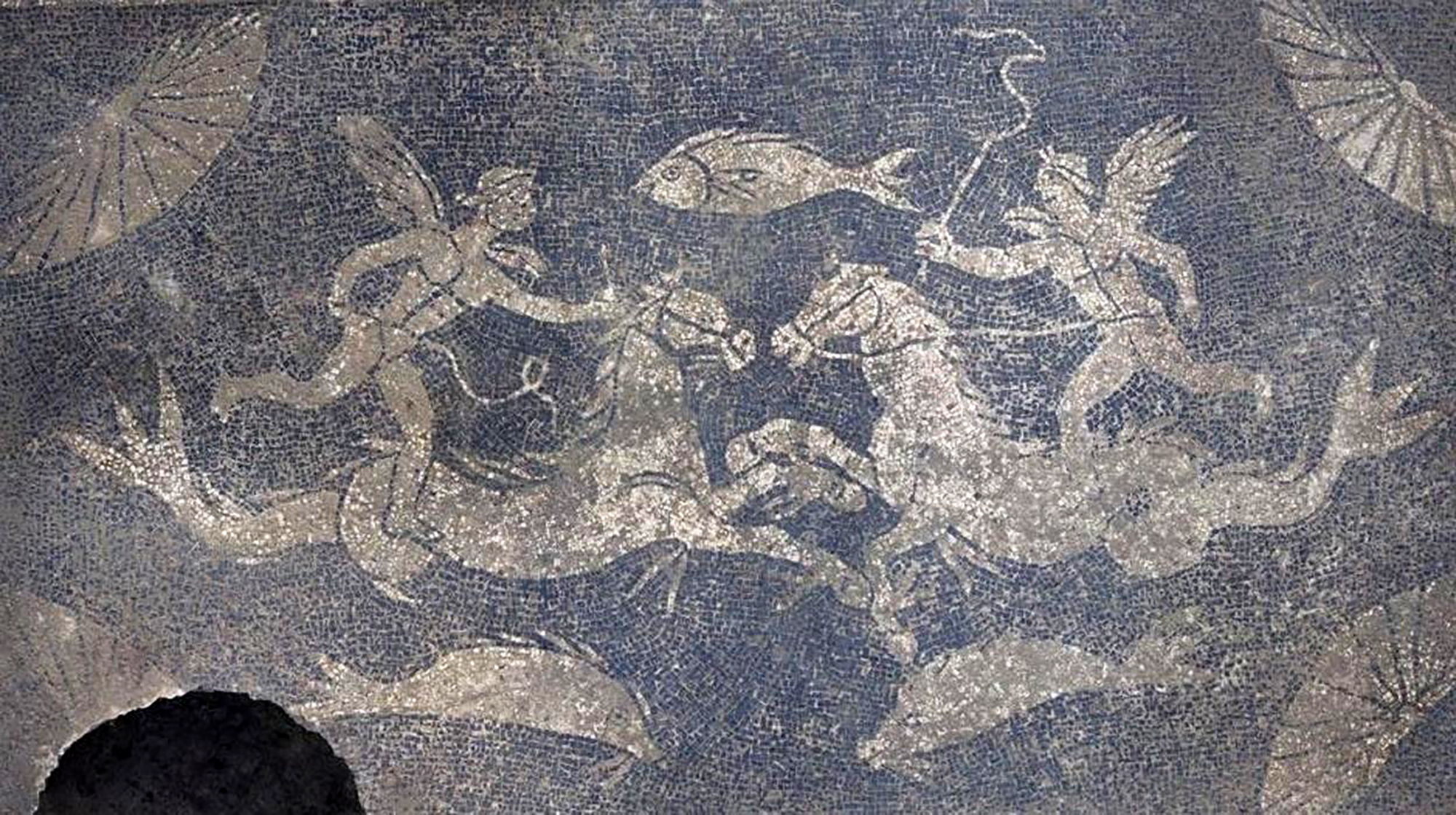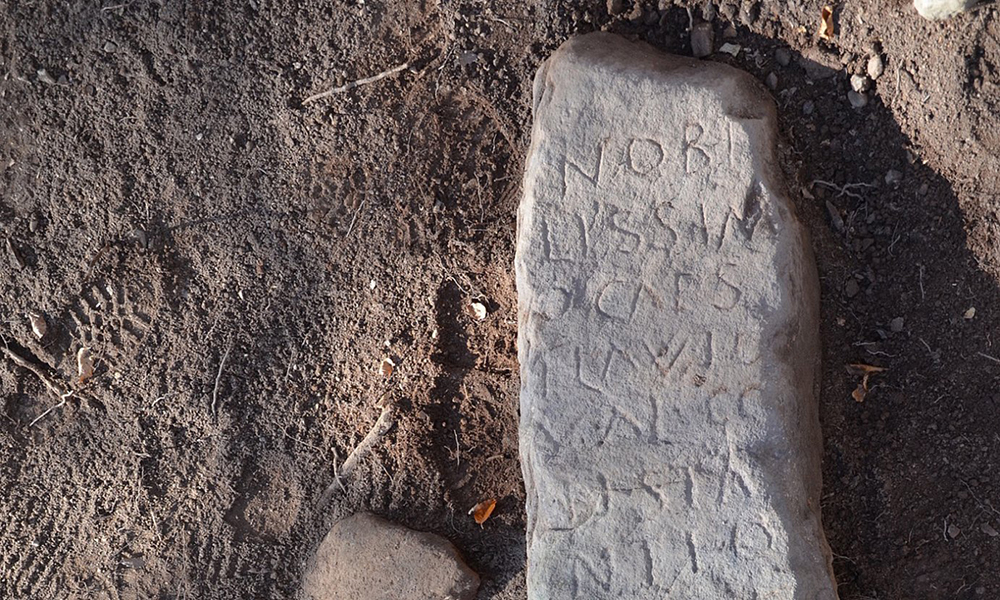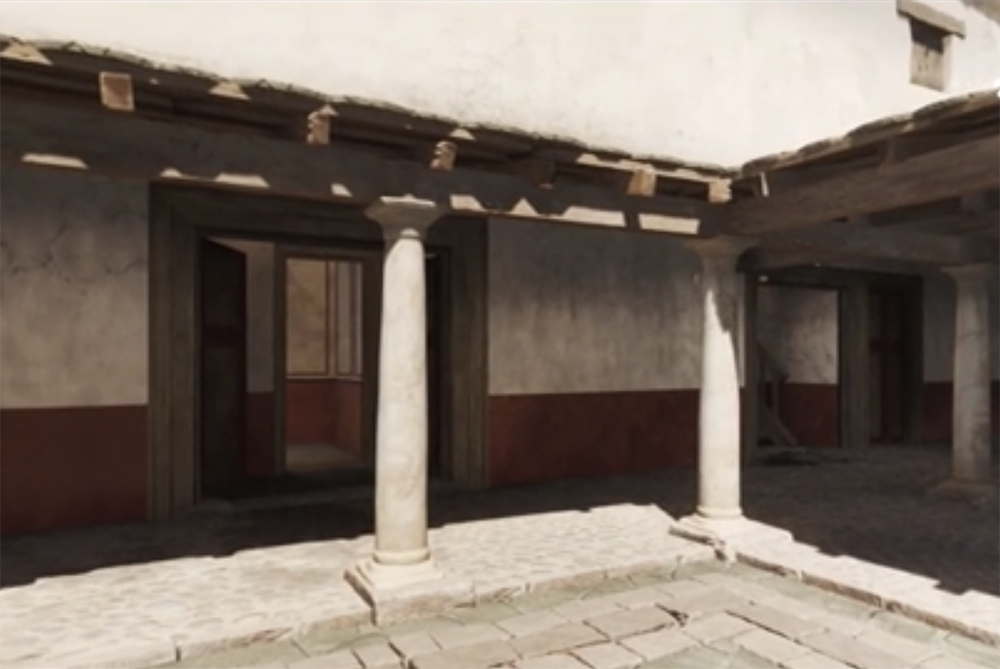A fortified town of Vascones in the Pyrenees Skirts
- After two weeks of work, the excavations of 2020 at the archaeological site of Irulegi have been completed. On 9 July the first results were presented in a press conference by representatives of the Society of Sciences Aranzadi, the City of Aranguren and the Government of Navarra. Although the medieval castle is known in particular, Irulegi will be a key site in the coming years to deepen the Protohistory and Antiquity of Navarre.

This year’s campaign has been special because of the complicated situation created by the COVID-19 pandemic. As explained by the project director, Mattin Aiestaran, no public call for participation in the excavation could be made this year, and a working group consisting mainly of people from previous years has been formed. History and archaeology students from different parts of the Basque Country predominate, but there are also young people from the towns that make up the Aranguren Valley who work in Auzolan. In view of the number of visitors who have come during the excavation, it is clear that the project has aroused interest not only in the villages around, but in the whole of Navarra.
Surprising results
The Irulegi research project started in 2007 when the Aranguren Valley City Hall signed a collaboration agreement with the Society of Aranzadi Sciences to excavate and condition the ruins of the medieval castle located 893 meters high, near the town of Lakidain. The importance of the fort was known, among other reasons, by the historical documents of the Kingdom of Navarre since the 12th century; moreover, thanks to its location, it is possible to safeguard the entire Region of Pamplona, including urban capitality, as well as the main roads leading to the Pyrenees. As a sign of this strategic importance, the works carried out between 2007 and 2017 showed the existence of a rectangular building surrounded by four towers, with a south orientation such as donjon or main tower. These works brought a great deal of archaeological materials to light, and today they are working hard to publish these results.
Aiestaran took the lead in the project in 2016, in order to develop a doctoral thesis based on it. Two years later, however, it acquired a new dimension when geophysical exploration of the castle environment revealed the existence of several buildings under the earth's surface. The first investigations yielded unexpected results: a protohistoric town developed in several phases under the castle of Irulegi, one of the most important in the territory of the Vascones.
The site occupies an area of approximately 12 hectares and is surrounded by a complex walled system. The oldest remains date back to the Bronze Age (c. Although they are from the 14th century, the nucleus developed mainly in the Second Iron Age, in the 18th century BC. Beginning in the 6th century. At that time, the signs of human occupation spread throughout the Irulegi massif.

Vascones and Romans in the Serthorium War
This last stage corresponds precisely to the building that this year has been dedicated to digging. It is a space of about 60 square meters, built with stone sockets and an adobe wall. The materials that have been exposed (ceramics, seeds of consumed plants and cattle bones, tools such as stone mills…) reflect the lifestyle of a complex society; in addition to the signs of specialization, imported elements representing the exchange networks of the time have also appeared.
On one side of the building, a tomb has been found in which, given the characteristics of the remains, it is not possible to specify whether he was born or not, but researchers believe that the fact of burying him inside the house could reflect a certain rituality. Radiocarbon dating in the 15th century a. In the 4th century he situated his death.
Although paradoxical, the building has been preserved almost entirely due to its complete destruction. Both the roof and the walls are fallen and show clear signs of combustion. This happened in the middle of the 18th century BC. It happened in the first century, in the 1970s. At this time, the Sertory War was taking place in the north of the Iberian Peninsula: on the one hand Sertorio, rebel consul in Hispania, who received the support of several Celtic tribes; on the other hand Pompey, sent by the Senate from Rome to restore order. According to sources at the time, Pompey had spent a winter among the Basques and his camp had given a spring to a city: Pompaelo, the later Pamplona.
However, it is not very clear on the side to which the Basques opted; it is possible that in the coming years the destruction of the people of Irulegi will give more clues to the influence that this conflict had on our people. What is clear is that, after this event, the area was completely abandoned, a few kilometres away, on the shore of the Arga, for the benefit of the new city that was beginning to develop.
.JPG)
In any case, the site of Irulegi is of vital importance, beyond the war of Sertorio, in understanding the keys of some facts that marked the Protohistory and Antiquity of Navarra. Aiestaran pointed out that in the Iron Age there are no strangers the fortified populations of this kind in the Ebro Valley, and in the Ribera de Navarra there are also some examples: El Alto de la Cruz (Cortes), La Custody (Viana)… On the contrary, the valleys of the Pyrenean skirt have been considered poorer, since until now there were no known deposits of these characteristics; the identification of the space that this entity houses in the entire region of Pamplona has revealed the need to rethink some ideas, showing that there is still much to be researched. Thus, Irulegi’s research project will give much to talk about in the coming years, as it is an important milestone in the knowledge of our past.

Hil honetan hasi eta abuztuaren 28a bitartean, Foruko (Bizkaia) erromatar herrixkaren arrastoetara hurbiltzen denak bisita gidatu berezia egin ahal izango du, aurrez aurrekoa eta birtuala, aldi berean.
Burdin Aroko baskoien hiri baten aztarnak aurkitu ditu Aranzadik Irulegi mendiko magalean eta honek Erromatarren aurreko baskoiak duela 2.700 urte nola bizi ziren hobeto ezagutzeko aukera emanen du.
Beste deskubrimendu bat: erromatarrak. Tira, deskubrimendu, aspalditik ezagutzen ditut erromatarrak, Kaligula, Pontzio Pilatos, Coronavirus bera, Asterix Italian komikiko auriga; baina orain berriz aurkitu ditut, izan dut irudipen, argialdi, epifania moduko bat. Sarri xamar joan... [+]


















